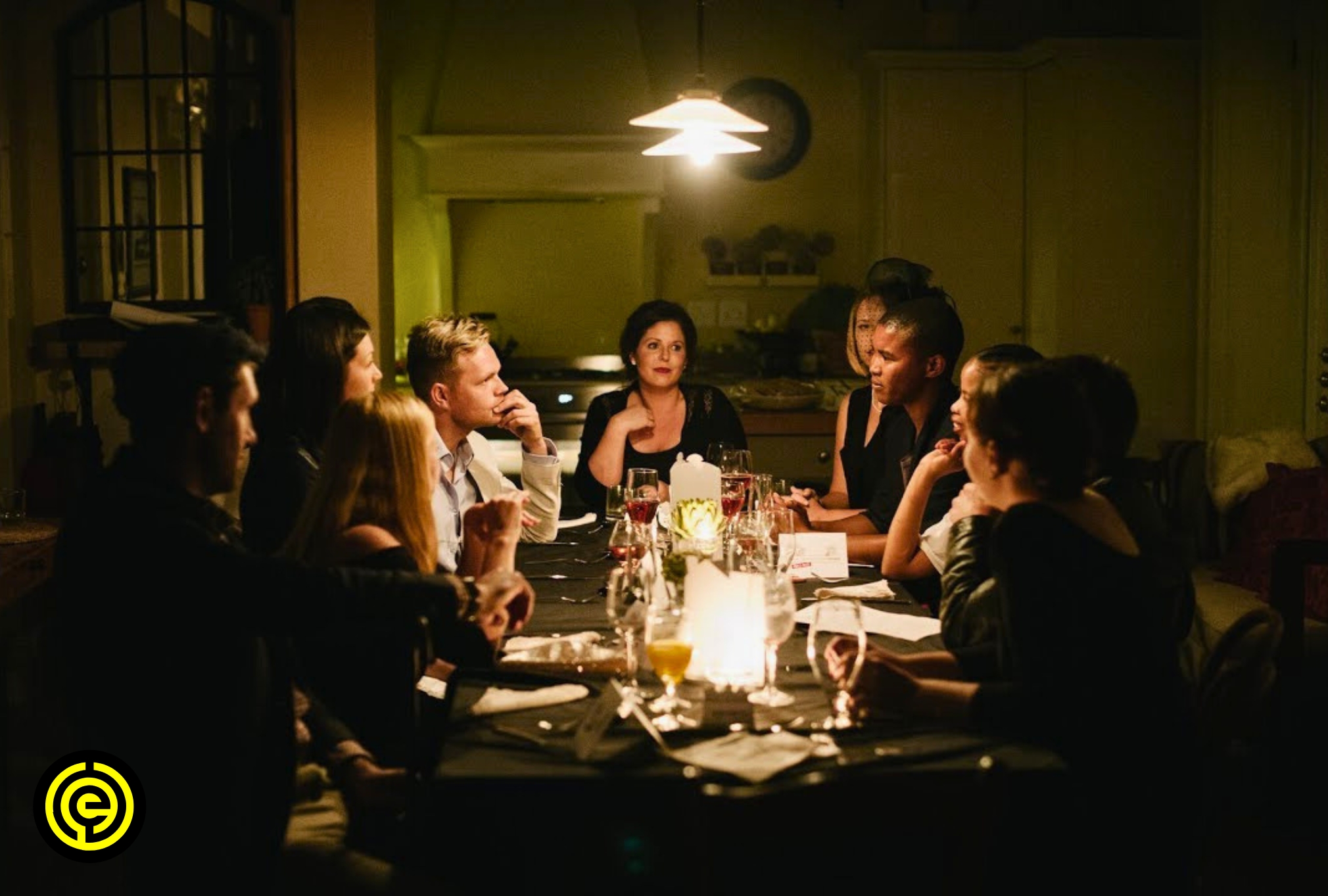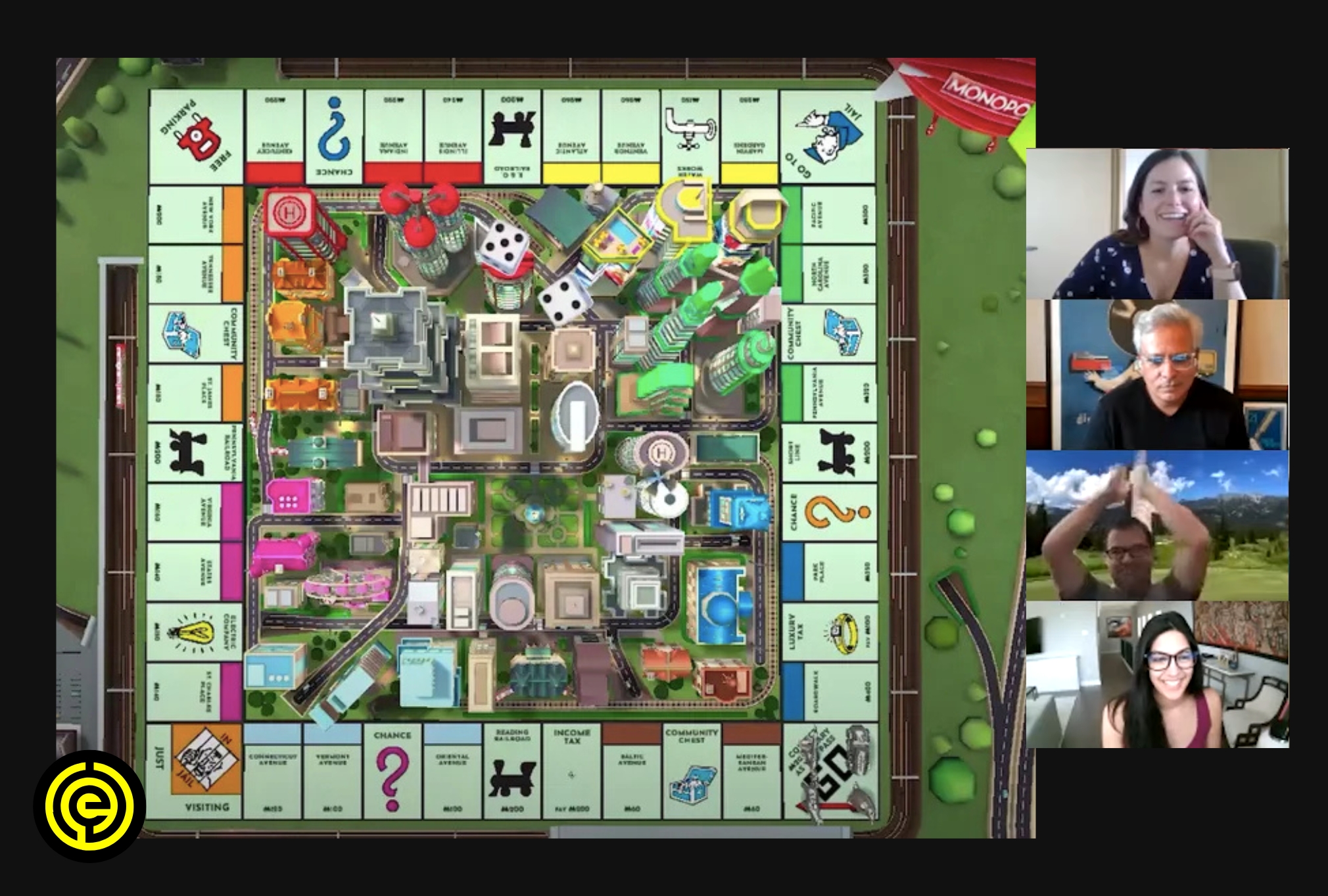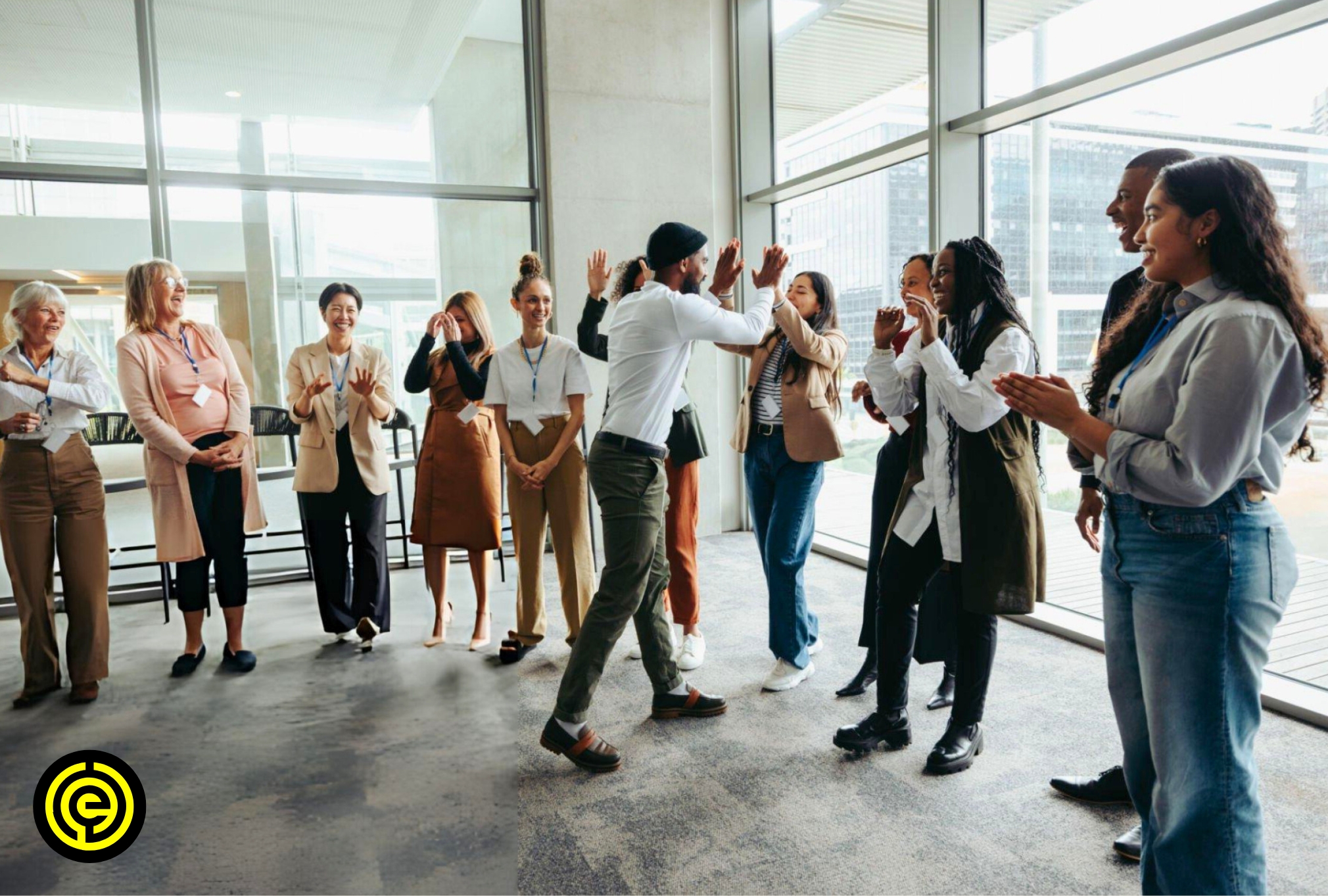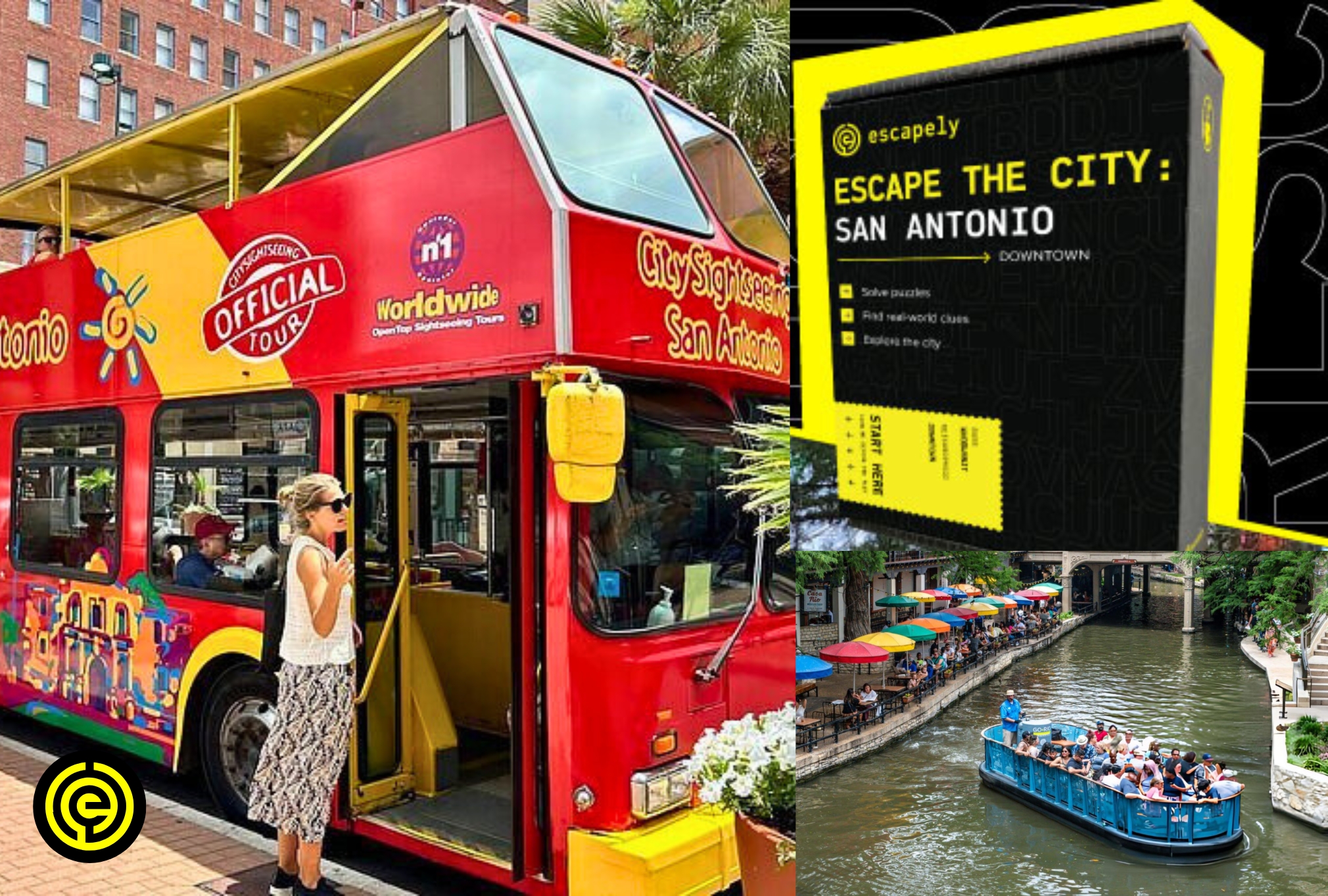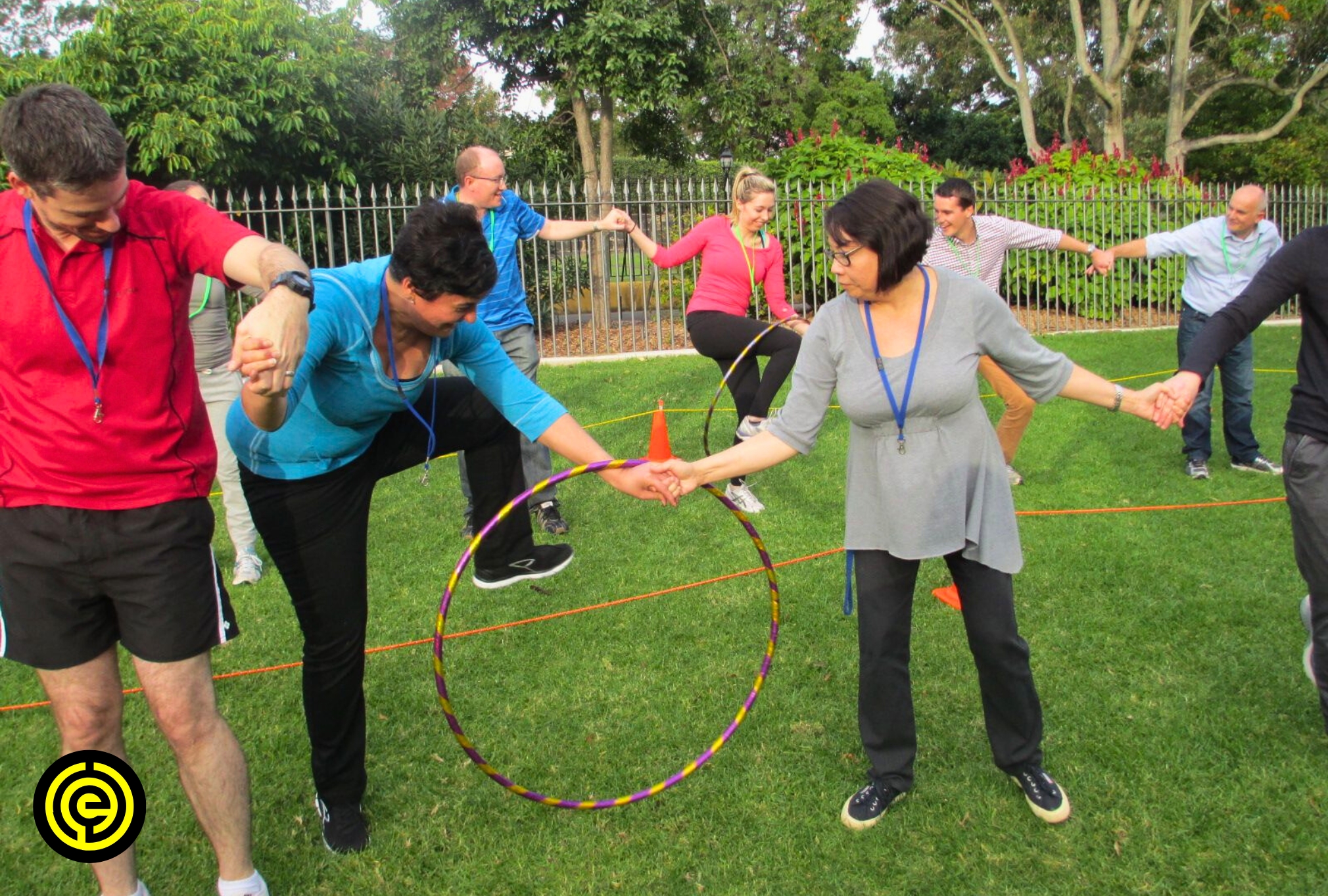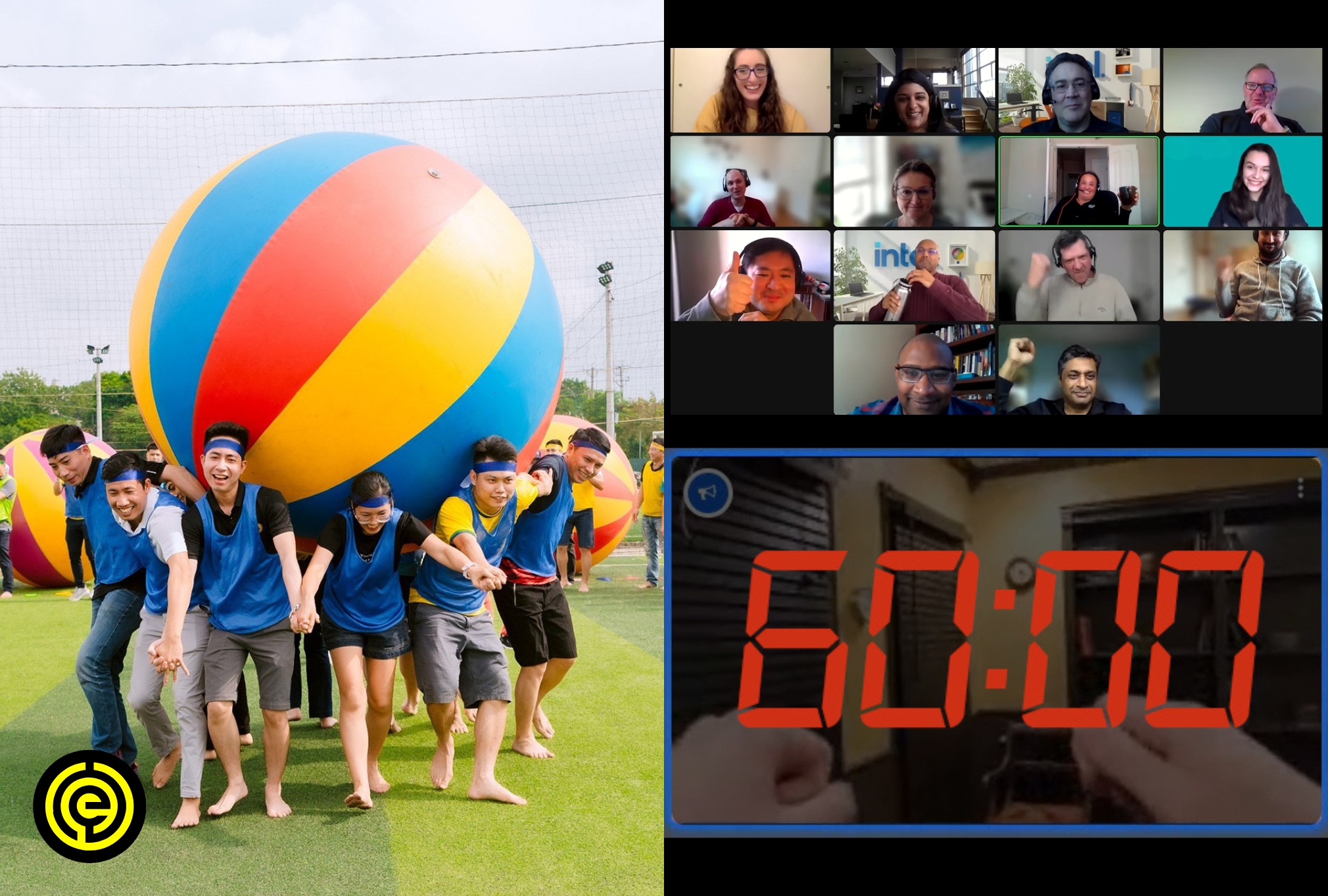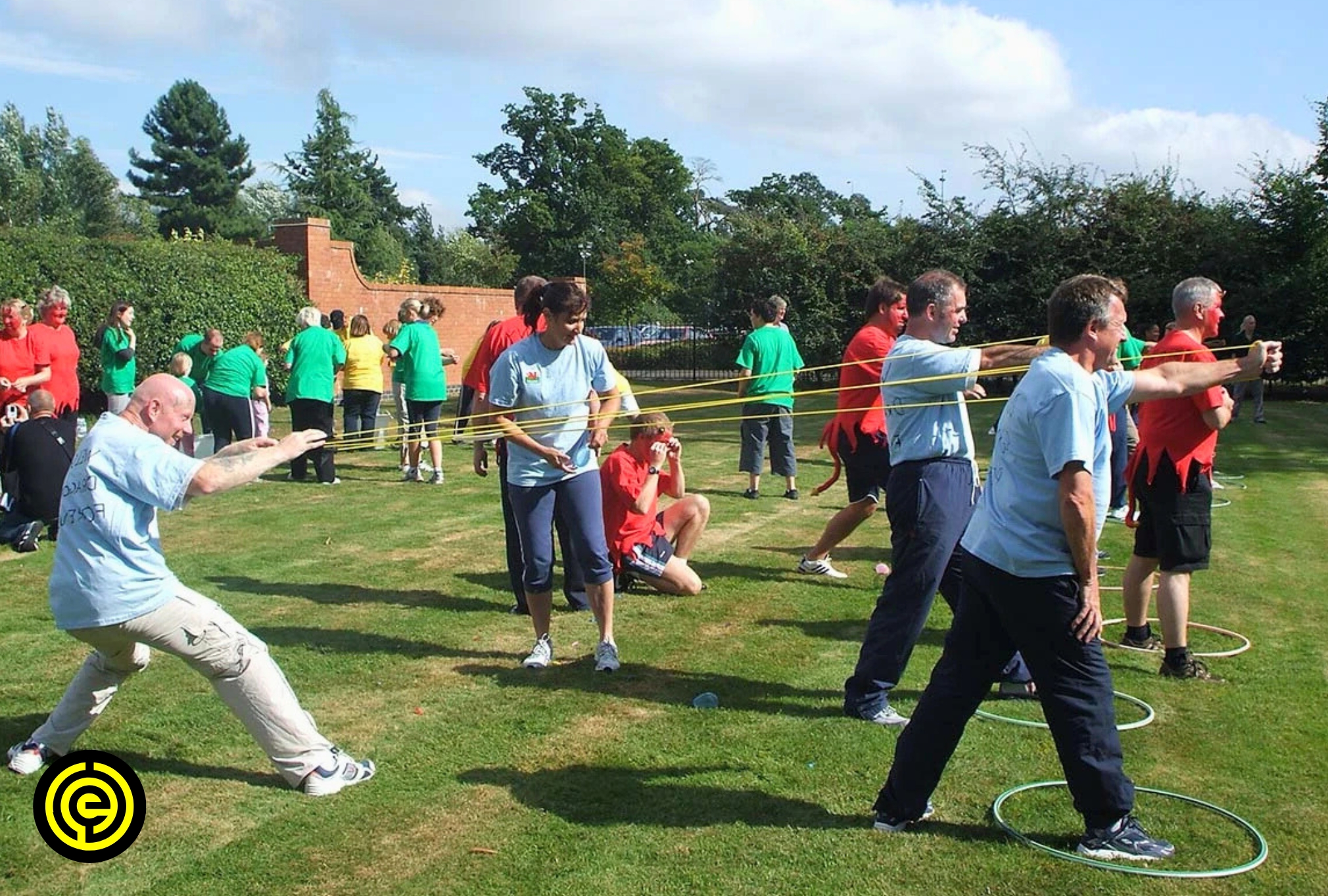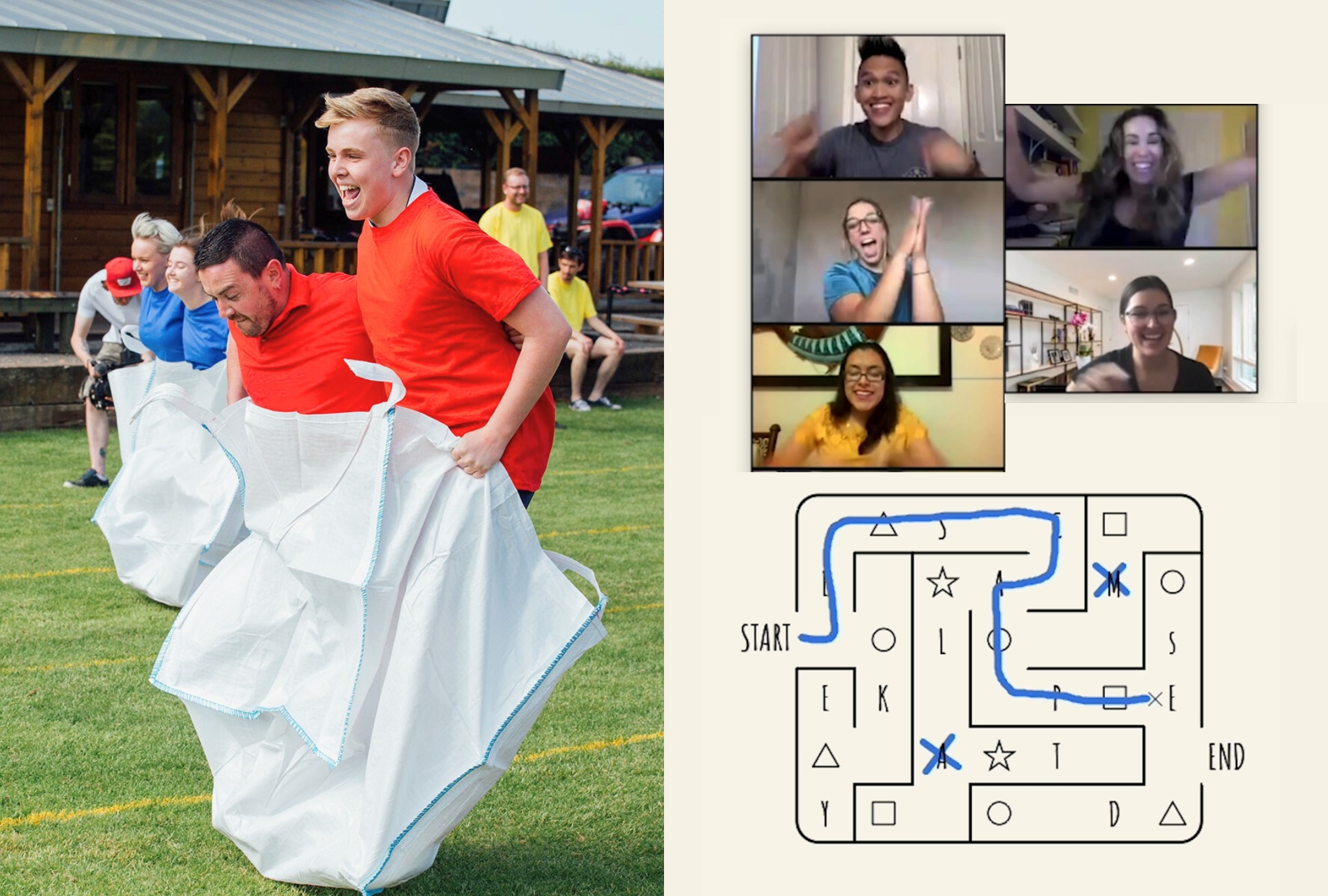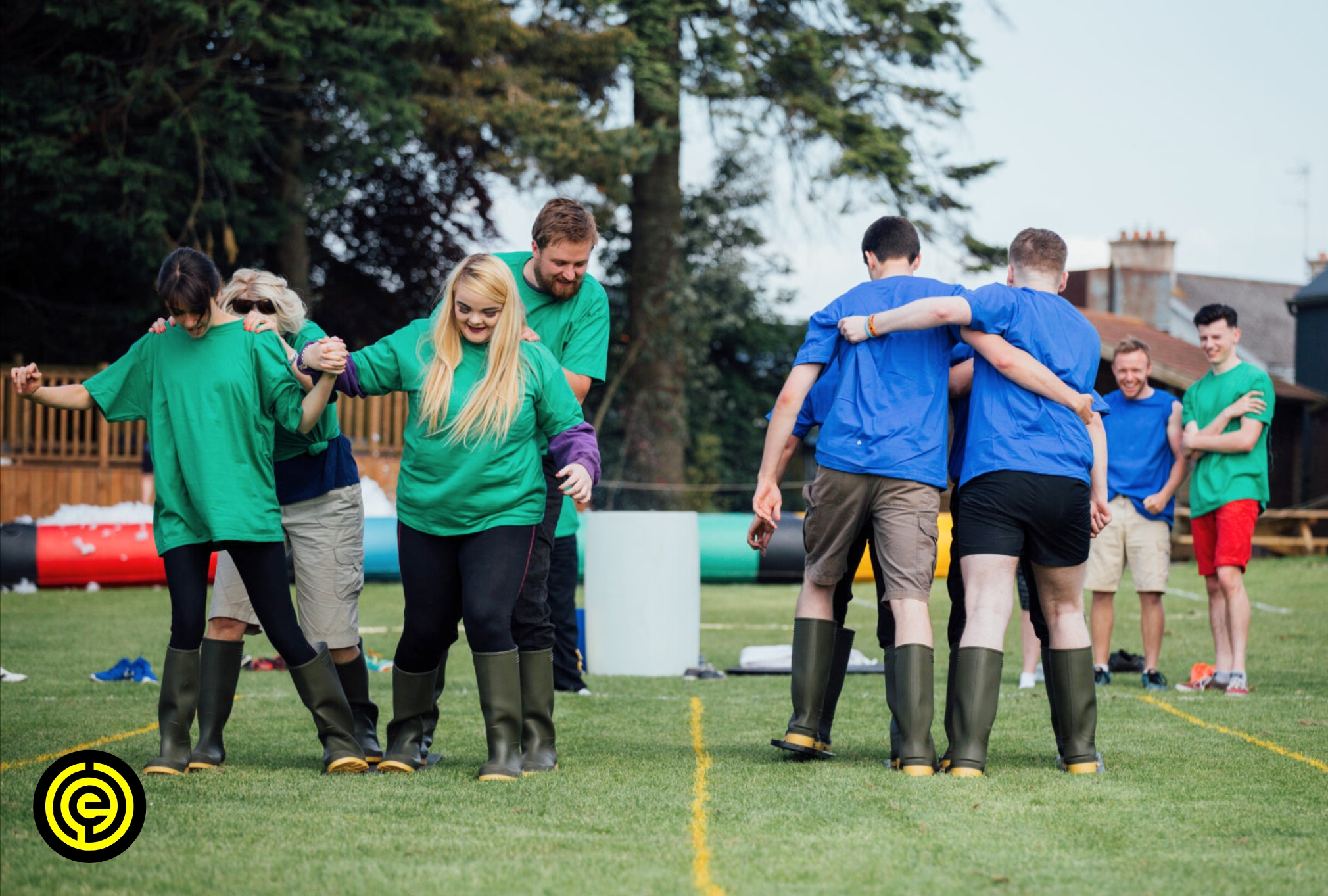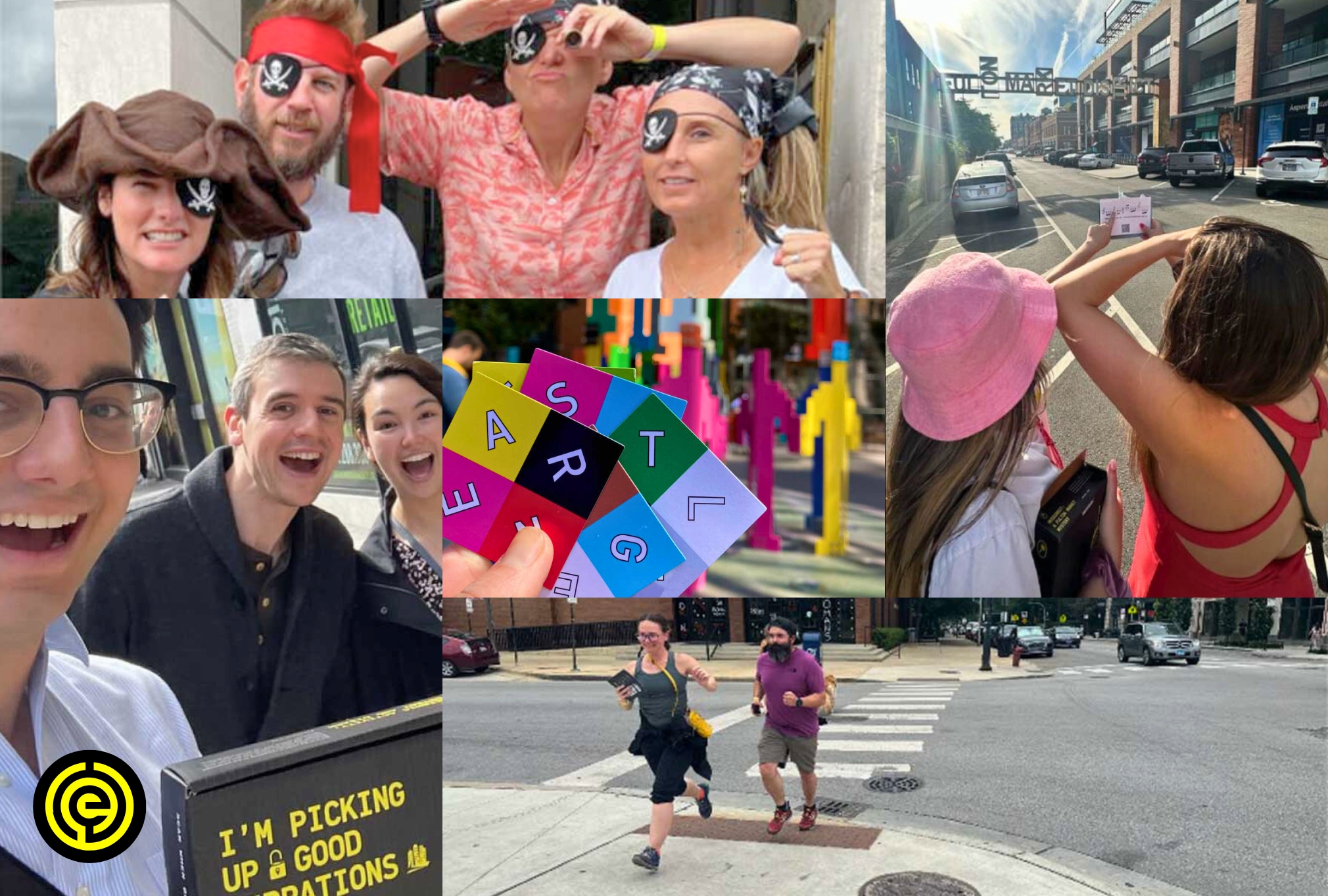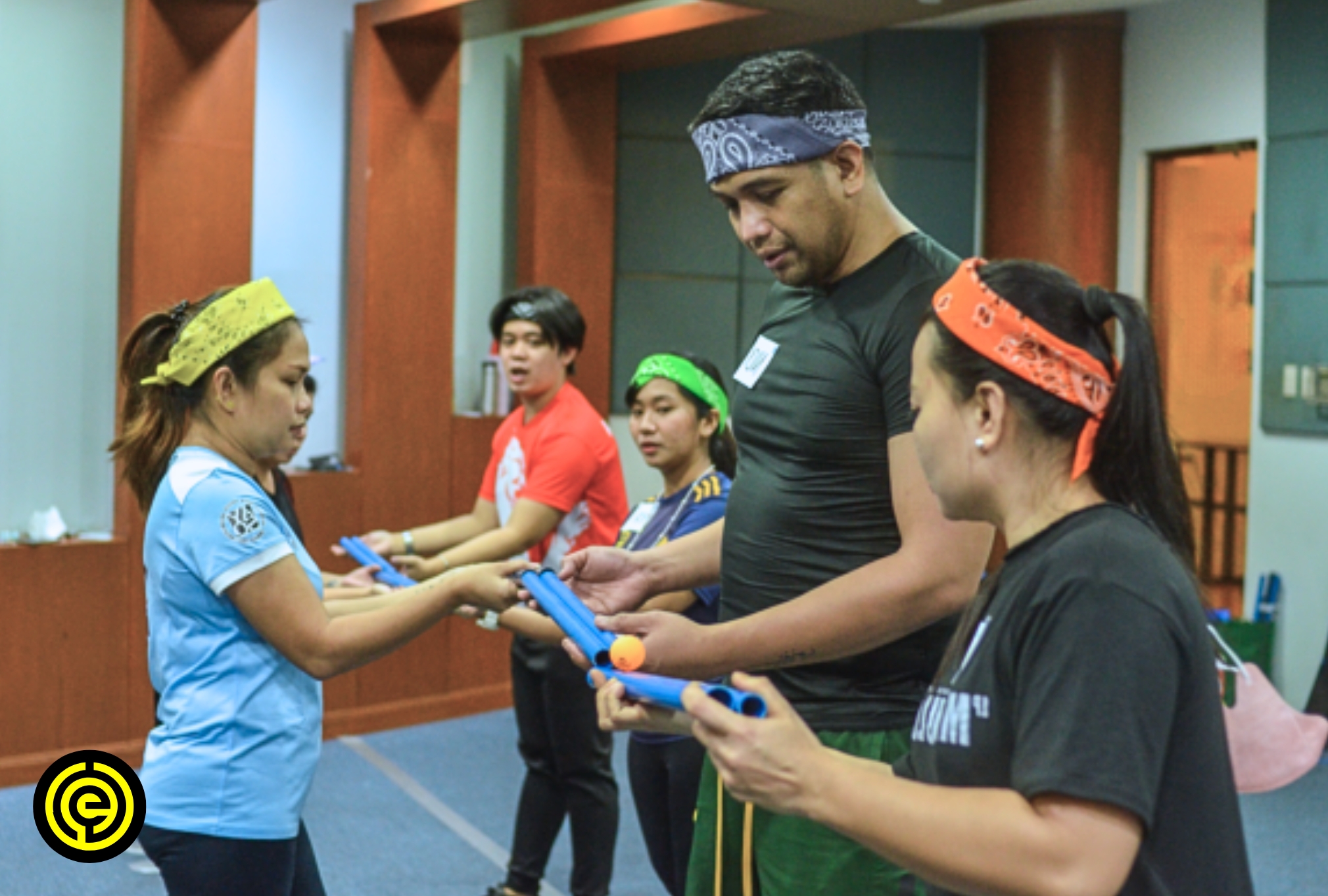Boost your team’s performance with these 12 tried-and-tested team-building tactics tailored to the demands of 2024.
With technology constantly changing how we work and relate to each other, creating a tight-knit, effective team is more important than ever.
Whether you are a team leader of a small startup crew or managing a big corporate cluster, understanding how teams learn to work together takes skill and planning.
Planning a team-building activity? Book a demo to see our customized and engaging team-building experiences in action.
Or read on for 12 top team-building tips for 2024. Each tip serves as a guiding light, showing how you can improve teamwork dynamics and productivity to succeed in the modern workplace.
#1 Hold Regular Team Building Events
A team-building event is designed to improve teamwork, collaboration, morale, and communication among group members.
This is why regular team-building events are often at the forefront of things you must do to enhance teamwork.
Regularly organizing events holds significance for various reasons, as outlined below.
- Strengthening Bonds: Regular events allow team members to bond with each other outside of work tasks. This strengthens relationships and builds team members’ trust and confidence in each other.
- Improving Communication: These events often involve activities requiring effective communication and collaboration. Regular participation in such events allows team members to hone their ability to get their message across.
- Boosting Morale: Engaging in enjoyable, rewarding team-building activities can uplift unit morale. It gives team members something to look forward to and creates a positive atmosphere outside of office hours.
- Increasing Productivity: When team members feel connected and motivated, they are more likely to effectively and efficiently work together.
- Fostering Innovation: Events encourage creativity and problem-solving, essential for innovation. These events can stimulate new ways of thinking by putting participants in situations that require them to think outside the box.
By arranging frequent events, you can cultivate an environment of support and inclusivity where team members feel appreciated and connected to each other and the organization as a whole.
This sense of community and belonging contributes to heightened productivity, creativity, and team effectiveness.
One great activity you might consider integrating into your team-building repertoire is virtual escape rooms.
Virtual escape rooms offer an immersive experience where team members collaborate to solve puzzles and conquer challenges within a set time frame.
#2 Determine Your Vision
Establishing your vision is crucial for guiding your team toward clarity, direction, and unity.
The vision represents the big-picture goals, values, and aims the team hopes to accomplish by working together and pooling their efforts.
The group vision is meant to guide everyone’s efforts. It creates a sense of direction and purpose, shaping how the team works together, makes decisions, and gets things done.
When determining your vision regarding team building, consider the following.
- Ensure that your vision is clear and easily understandable to all team members. It should succinctly communicate the team’s purpose, goals, and desired outcomes.
- Make sure that the vision aligns with your organization’s mission and objectives. It should contribute to the company’s overall goals while also reflecting the values and aspirations of the individual team.
- Involve team members in the process of defining the vision. Encourage open discussions and brainstorming sessions to gather input from everyone. When team members feel heard and involved, they are more likely to commit to achieving the vision.
- Craft a compelling vision that inspires and motivates team members. It should be aspirational, challenging them to strive for excellence and reach their full potential.
- Ensure the vision is realistic and attainable within the given resources and constraints. While it should be ambitious, it should also be achievable with the team’s available time, budget, and skills.
Creating a well-crafted vision also ensures that everyone is on the same page. It clarifies each person’s role and how they contribute to the bigger picture, fostering more effective and pointed teamwork and collaboration.
Setting your vision is not just about having a goal—it should also provide a roadmap for success, fueling team members’ motivation and aligning everyone’s efforts for long-term achievement and fulfillment.
#3 Get Input From Your Team
Promoting inclusivity and securing commitment within your team is essential. Hence, the third team-building tip stresses the necessity of gathering input from your team through open discussions and brainstorming sessions.
The input refers to the ideas, perspectives, feedback, suggestions, and contributions team members provide.
Here are some steps to accomplish this approach.
- Set an atmosphere of trust and openness where group members feel comfortable sharing their ideas and perspectives without fear of judgment or criticism.
- Actively encourage team members to contribute their thoughts and suggestions during meetings, discussions, and brainstorming sessions. Avoid dominating the conversation yourself, and ensure everyone has an opportunity to speak.
- Practice active listening by offering your full attention to members when they are talking. Avoid interrupting and show genuine interest in their contributions.
- Solicit feedback from team members regularly, both formally and informally. Encourage them to share their thoughts on processes, strategies, and team dynamics.
- Offer various channels for team members to provide input, such as meetings, one-on-one discussions, suggestion boxes, online platforms, or anonymous surveys.
This approach celebrates inclusivity and teamwork, acknowledging the valuable perspectives and insights each team member brings.
By involving your team in the decision-making process, you show faith in their abilities and cultivate an environment where everyone feels empowered.
Moreover, when you involve your team in decision-making, you encourage open and honest communication, which is vital for building your team.
#4 Allow For Professional Development
Professional development means acquiring new knowledge, skills, and competencies that can enhance an individual’s effectiveness and performance.
Allowing for individual professional development is crucial for team building as it enhances each team member’s skills, motivation, retention, collaboration, innovation, learning culture, and leadership development.
Simply put, when each team member is highly skilled and doggedly motivated, you are sure to get workers with the highest productivity who can and want to give their all to see the team succeed.
Here are some team-building activities that achieve professional development.
- Skill workshops
- Cross-training sessions
- Problem-solving challenges
- Role-playing exercises
- Networking events
- Mentorship programs
- Team-building retreats
- Community service projects
- Book clubs or learning circles
- Feedback and reflection sessions
Workers value on-the-job learning opportunities because they allow them to grow professionally and still earn a paycheck without sacrificing their personal lives.
By encouraging professional growth and offering chances for skill development, you aid people in seizing opportunities that can enhance the team’s overall effectiveness when they return.
Investing in these opportunities thus empowers your team to excel, increasing productivity and job satisfaction overall.
When you encourage professional development, you pave the way for team members to refine their abilities, broaden their knowledge, and stay abreast of industry developments.
This approach fosters a sense of loyalty and motivation within the team, as individuals feel supported in their journey to fulfill their potential.
#5 Try Out New Team Building Ideas
Trying out new ideas will allow you to incorporate novel team-building approaches that may be more effective or morale-boosting than traditional methods.
These new methods will entail trying various, often unorthodox, ways of improving teamwork, communication, and group collaboration.
Being open to new team-building adventures encourages teams to embrace creativity and experimentation when strengthening their bonds.
Here is a selection of creative team-building exercises to inspire your brainstorming sessions.
- Escape room challenge
- Outdoor adventure activities
- Cooking classes
- Scavenger hunt
- Charity or community service projects
- Team Olympics
- Improv workshops
- Puzzle games or brain teasers
- Art or craft workshops
- Team-building retreats
For example, integrating virtual team-building activities, such as a virtual murder mystery or virtual trivia games, offers exciting opportunities to involve team members in remote settings.
These types of team-building activities are enjoyable and interactive platforms for team members to connect and collaborate, nurturing communication, problem-solving abilities, and a sense of camaraderie in a memorable setting.
By being ready to explore new methods, your team practices adaptability and dedication to cultivating a vibrant team spirit, ultimately boosting team effectiveness and morale.
Planning a team-building activity? Book a demo to see our customized and engaging team-building experiences in action.
#6 Schedule Your Activities In Advance
Scheduling your team-building activities in advance is a total game-changer. It ensures everyone can participate and creates anticipation and excitement among team members.
Planning a schedule entails arranging various events or initiatives designed to strengthen teamwork, communication, and camaraderie among team members ahead of time.
For example, if you are organizing the “Amazing Escape Race,” scheduling it a few weeks beforehand is essential.
This exciting team-building activity involves teams tackling challenges and puzzles within a set time frame, promoting teamwork, problem-solving, and collaboration.
By planning the event early, team members can clear their calendars and fully engage in the event.
When scheduling activities in advance for team building, consider the following steps.
- Determine Objectives: Determine the specific goals and objectives you want to achieve through the team-building activities.
- Select Activities: Choose team-building activities that align with the identified objectives and the team members’ preferences.
- Determine Timing: Decide on the timing for the team-building activities, considering factors such as the availability of team members, work schedules, and other commitments.
- Secure Resources: Arrange for any resources or materials needed for the activities, such as venue bookings, equipment, supplies, and facilitators.
- Communicate Details: Communicate the details of the scheduled activities to all team members well in advance.
- Provide Reminders: Send reminders closer to the scheduled date to ensure team members know the upcoming activities and have ample time to prepare.
- Facilitate Preparation: Encourage team members to prepare for the activities by familiarizing themselves with any instructions or materials provided in advance.
- Evaluate and Adjust: After completing the scheduled activities, assess their usefulness in achieving the desired objectives.
By planning team-building activities, teams can coordinate logistics, gather necessary materials, and set clear expectations for everyone involved.
#7 Get Everyone Involved
Elevate your team’s performance by transforming your teams through comprehensive engagement.
This means getting everyone in the team involved, regardless of their role or position within the organization.
Consider these tips to ensure the full involvement of all team members in your team-building activities.
- Communicate the purpose and objectives of the team-building activities to all participants to ensure everyone understands what is expected and why their involvement is essential.
- Promote an atmosphere where team members feel comfortable conveying ideas, opinions, and concerns without fear of judgment. Encourage open communication and active listening.
- Assign leadership roles or responsibilities to different team members for each team-building activity to allow everyone to contribute and take ownership of the process.
- Provide a variety of team-building activities that appeal to different interests and strengths to ensure that all team members can participate and contribute in ways that suit their abilities.
- Start with icebreaker activities or games to help team members get to know each other and feel more comfortable collaborating throughout the team-building session.
Engaging everyone means establishing an environment where all team members feel valued, listened to, and included in the team-building process.
This approach might involve encouraging quieter individuals to share their thoughts, actively soliciting input from all team members, and offering opportunities for everyone to join in team-building activities.
As a leader, you cultivate a sense of belonging and ownership within the team by including everyone. This inclusiveness fosters teamwork and mutual support, strengthening cohesion and overall effectiveness.
#8 Explore Prizes and Rewards
Exploring prizes and rewards can significantly enhance your team’s experience and motivation.
This approach typically involves incorporating incentives or recognition systems to encourage and reward desirable behaviors, achievements, or contributions within the team.
Exploring prizes and rewards is a powerful motivational tool that offers tangible incentives that inspire employees to strive for excellence and surpass expectations.
When considering prizes and rewards, teams should consider how these incentives can be woven into in-person or virtual team-building games, such as “Destination Unknown.”
Here are some more ways to reward good work within a team.
- Simply acknowledging and praising workers for their hard work and achievements can go a long way in boosting morale and motivation.
- You can give monetary rewards. This could include bonuses, raises, profit-sharing, or other financial incentives based on individual or team performance.
- Providing additional paid time off, such as a day off or an extended weekend, as a reward for exceptional performance.
- Presenting opportunities for employees to attend conferences, workshops, or internship programs to enhance their skills and knowledge.
- Allowing employees to have more flexibility in their work schedules or to telecommute occasionally as a reward for their dedication and contributions.
These are just a few examples, and the most effective rewards will often depend on the individuals’ preferences and needs and the organization’s culture.
#9 Consider Doing Volunteer Work
Volunteer work is a valuable opportunity for personal growth and community impact.
Volunteering involves encouraging team members to engage in community service or volunteer charity activities together.
This team-building exercise catalyzes unit team building, fostering collaboration, communication, and camaraderie among team members as they work collectively towards shared altruistic goals.
When considering volunteer work, teams may consider aligning their efforts with quarterly causes. This means selecting charitable projects or community initiatives to contribute to regularly, perhaps every quarter, as part of their team-building approach.
Here are some suggestions for volunteer work that positively impacts the community.
- Participate in local beach cleanups, park restoration projects, or litter cleanup initiatives.
- Help build or renovate homes for families in need.
- Contribute to your local food bank or soup kitchen, sorting donations, preparing meals, or serving food to those in need.
- Get involved in community garden projects, where team members can plant, maintain, and harvest produce for local food banks or community members.
- Volunteer at an animal shelter by walking dogs, socializing with cats, cleaning cages, or assisting with adoption events.
#10 Encourage Conversations and Communication
Encouraging conversations and communication refers to creating an atmosphere where team members feel empowered to openly communicate, share ideas, provide feedback, and resolve conflicts effectively.
This idea promotes improved collaboration by facilitating the exchange of ideas, knowledge, and perspectives among team members, thus enabling more effective teamwork toward shared objectives.
Presented below are some effective ways to promote conversations and communication.
- Foster an Open Door Policy: Create an environment where team members feel comfortable approaching leaders and colleagues with questions, ideas, or concerns.
- Hold Regular Team Meetings: Schedule regular team meetings to provide opportunities for open dialogue, project updates, and brainstorming sessions. Encourage active participation from all team members.
- Use Collaboration Tools: Implement communication tools such as instant messaging platforms, project management software, or collaborative document-sharing tools to facilitate easy communication and information sharing among team members.
- Organize Team-Building Activities: Plan team-building activities such as workshops, retreats, or social events to encourage team bonding and open communication in a relaxed setting.
- Establish Clear Communication Channels: Define clear communication channels and protocols within the team, including guidelines for email communication, meeting agendas, and decision-making processes.
By implementing these strategies, teams can create a culture of open communication where ideas are freely shared, feedback is encouraged, and collaboration thrives.
#11 Continuously Grow and Evolve
Team building is not a one-time occasion but an ongoing journey that evolves over time. It is vital to adjust your team-building strategies to meet the team’s evolving needs.
While plenty of excellent resources are available for team building, they are not set in stone. Fresh team-building activities and advice emerge regularly.
It is essential to stay committed to team building and remain updated with the latest trends and top tips to ensure your team stays engaged and cohesive.
Continuously evolving will entail introducing new team-building activities, revisiting existing ones, or tailoring approaches to address specific challenges or opportunities within the team dynamic.
By staying proactive and responsive, you can help foster continuous growth and improvement within your team.
#12 Have Fun
Let us wrap up with the last team-building tip, reminding us of the importance of having fun. Enjoying the journey as you work together toward your goals is often as important as getting there when it comes to team dynamics.
Engaging in fun team-building activities significantly boosts team morale, fostering relaxation, laughter, and positive emotions, ultimately leading to heightened motivation and a more optimistic team outlook.
Setting up a free demo at Escapely is a great way to bring this tip to life.
Escapely offers a variety of immersive and engaging escape room experiences that can be tailored to suit the needs and preferences of different teams.
By booking a free demo session at Escapely, team members can taste the excitement and challenge these experiences offer without financial commitment.
During the free demo, team members can explore different scenarios, solve puzzles, and work together to accomplish objectives within a specified time frame.
Planning a team-building activity? Book a demo to see our customized and engaging team-building experiences in action.










